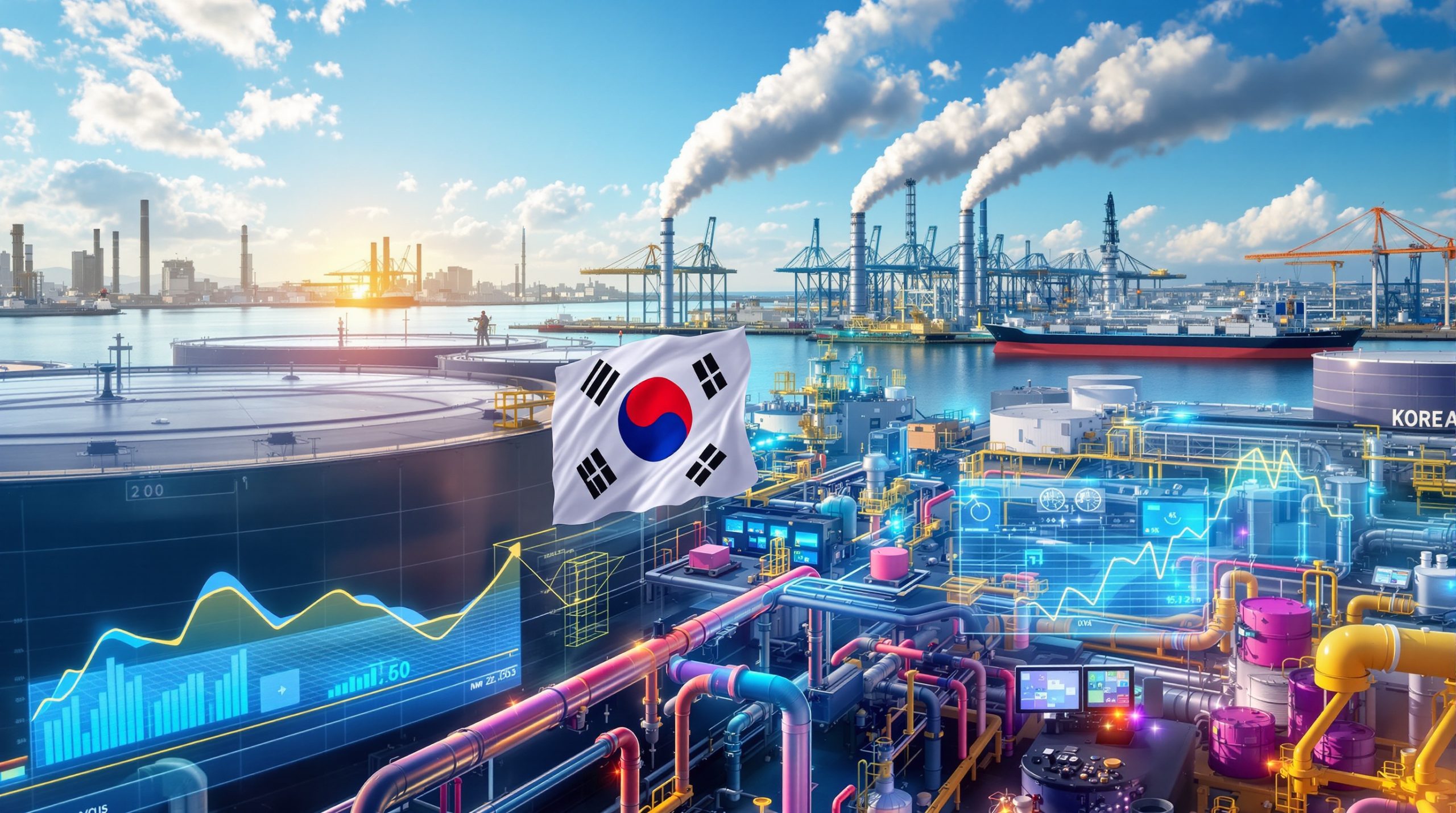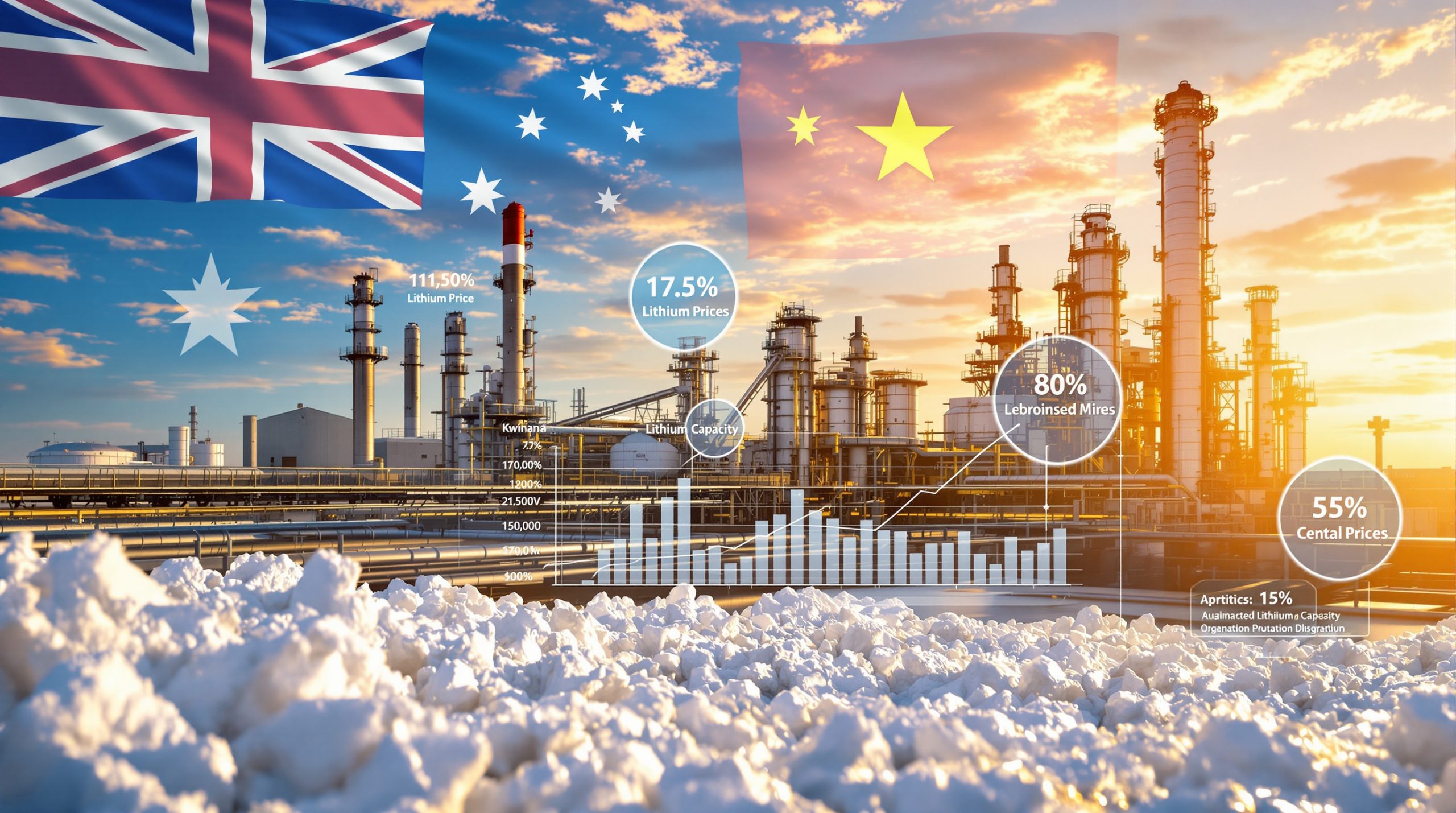What Led to MP Materials' Decision to Stop Exports to China?
In a move that sent ripples through global rare earth markets, MP Materials announced in April 2025 that it would cease exporting rare earth materials to China. This pivotal decision marks a significant shift in global supply chains and underscores growing tensions between the United States and China in the critical minerals sector.
Chinese Export Restrictions on Critical Materials
China's export restrictions on rare earth elements served as a catalyst for MP Materials' strategic pivot. These restrictions specifically target materials essential for advanced technology manufacturing and defense applications, including neodymium, praseodymium, terbium, and dysprosium—elements crucial for producing high-performance magnets used in electric vehicles, wind turbines, and military systems.
The Chinese government framed these controls as measures to protect national security interests, but industry experts view them as leverage in the ongoing technological competition with Western nations. Despite global diversification efforts, China maintains its dominant position, controlling approximately 85% of global rare earth processing capacity and producing about 70% of the world's raw rare earth minerals.
"China's export controls represent a calculated move to maintain leverage over high-tech supply chains," noted industry analyst Jacob Lorinc of Bloomberg. "By restricting these materials, China aims to preserve its advanced manufacturing advantage while potentially slowing Western technological development."
Economic and Strategic Factors
MP Materials cited prohibitive 125% tariffs that made continued exports "commercially irrational" as a primary driver behind its decision. These punitive tariffs, implemented as part of China's broader trade strategy, effectively closed the Chinese market to American rare earth producers.
In its public statement, MP Materials emphasized that "continuing exports under these conditions would not align with America's national interest." This language signals the company's recognition of its role in national security considerations beyond purely commercial interests.
Financial markets responded swiftly to the announcement, with MP Materials' stock dropping as much as 10% in midday trading following the news. This decline reflected investor concerns about the company's near-term revenue outlook, given that China had previously been MP Materials' primary export market for its rare earth concentrates from the Mountain Pass mine.
The decision represents not just a business strategy shift but a fundamental realignment of MP Materials' role in the global rare earth supply chain. Rather than serving as a raw material supplier to Chinese processors, the company is positioning itself as a cornerstone of America's domestic rare earth value chain.
How Does This Move Impact the US Rare Earth Supply Chain?
The cessation of exports to China creates both challenges and opportunities for the American rare earth industry, which has struggled for decades to compete with China's integrated supply chain.
MP Materials' Current Position
Operating the Mountain Pass mine in California—the only active rare earth mining and processing facility in the United States—MP Materials occupies a unique position in America's critical minerals landscape. The facility produces approximately 15% of global rare earth concentrates, making it a significant player in the international market.
Prior to this decision, MP Materials' business model relied heavily on exporting rare earth concentrates to China for further processing into separated rare earth oxides and metals. This dependency stemmed from the United States' lack of commercial-scale separation facilities—a critical gap in the domestic supply chain that has left American manufacturers vulnerable to critical mineral shortages.
The company's pivot represents a strategic realignment toward supporting domestic manufacturing needs. MP Materials has already begun accelerating its vertical integration plans, including the development of separation and processing capabilities at Mountain Pass and a magnet manufacturing facility in Texas.
"We're on track to launch full separation capabilities by late 2026," revealed MP Materials' CTO in a recent statement. "This transition positions us to deliver a fully American supply chain from mine to magnet within the next three years."
US Rare Earth Industry Challenges
The United States currently faces significant challenges in developing a self-sufficient rare earth supply chain. Despite being home to an estimated 2.3 million tonnes of rare earth reserves according to USGS data, the country produces and refines little of its own rare earth materials beyond MP Materials' operations.
The technical complexity of rare earth separation presents a particular obstacle. Solvent extraction processes require specialized infrastructure currently absent in the U.S., and according to a 2024 Department of Energy report, "Onshoring separation could take 5-7 years without Chinese collaboration."
Even more concerning is the magnet manufacturing gap, as the U.S. produces less than 1% of global rare earth magnets. Industry estimates suggest at least $1.5 billion in investments will be required by 2030 to establish competitive manufacturing capacity.
These challenges have created acute concerns about supply security for defense and technology sectors. Critical systems like F-35 fighter jet sensors, precision-guided munitions, and advanced radar systems all depend on rare earth elements that currently flow through Chinese supply chains.
Manufacturers across critical industries are actively seeking secure, resilient sources. Energy Fuels CEO noted that inquiries from potential customers have increased 300% since China's export controls were announced, stating: "Our White Mesa Mill can partially fill the processing gap, producing six of the controlled rare earth elements."
What Are the Broader Implications for Global Rare Earth Markets?
MP Materials' decision exists within a context of escalating competition for control of critical mineral supply chains worldwide.
Escalating Trade Tensions
The company's strategic shift follows broader trade conflicts between the United States and China that have intensified since 2018. Rare earth elements have become increasingly politicized as strategic resources, with both nations treating them as leverage in broader economic and security competitions.
This development represents part of a larger trend that Jacob Lorinc describes as the "reindustrialization of mineral supply chains" in Western economies. After decades of outsourcing mining and processing to China and other countries, the United States and its allies are now working to rebuild domestic capabilities in critical minerals.
MP Materials' decision could serve as a catalyst for other companies to reconsider their supply chain strategies. Mining firms in Australia, Canada, and Africa that have traditionally relied on Chinese processing may accelerate efforts to develop alternative processing routes through partnerships with Western refiners and manufacturers.
The CRU Group analysis suggests that "China's export controls may backfire by incentivizing Western capital to fund alternatives" to Chinese processing. This could potentially accelerate the diversification of global rare earth supply chains over the next five years.
Market Response and Industry Trends
Rare earth stocks have shown positive movement on signs of Trump administration support for domestic production. USA Rare Earth's stock rose 18% following the announcement, reflecting investor confidence in favorable policy tailwinds for U.S.-based producers.
Other companies positioned to benefit from this shift include The Metals Company, which is developing deep-sea mining capabilities for rare earths and other critical minerals. Their CEO stated that "deep-sea mining could offset land-based supply risks by 2028," offering a potentially game-changing alternative to traditional mining.
Energy Fuels has also seen increased investor interest after announcing its capability to produce six rare earths subject to Chinese export controls. The company's White Mesa Mill in Utah—originally designed for uranium processing—has been repurposed to extract rare earths from monazite sands, demonstrating the industry's adaptability in response to market pressures.
These market movements reflect growing investment interest in domestic rare earth production capabilities. Venture capital funding for rare earth startups reached $850 million in the first quarter of 2025, a 300% increase over the previous year, according to industry data.
How Does This Fit into US Critical Minerals Strategy?
MP Materials' strategic pivot aligns closely with evolving U.S. government policy on critical minerals security.
Policy Developments
The Trump administration has pursued an aggressive approach to reduce dependence on Chinese minerals, including minerals-for-security deals with countries like the Democratic Republic of Congo. The April 2025 U.S.-DRC cobalt deal aims to secure 35% of battery mineral needs for American manufacturers.
In a significant policy action, President Trump signed an executive order in early 2025 mandating a 50% reduction in Chinese rare earth imports by 2028. This order directed federal agencies to prioritize domestic sources for critical minerals in government procurement.
The administration has also ordered a comprehensive probe into possible tariffs on all critical minerals imports, signaling a willingness to use trade policy as a tool to reshape global supply chains. A White House statement emphasized that "This administration will use every tool to break China's stranglehold" on critical minerals.
These policies build upon previous initiatives like the 2022 Defense Production Act invocation for critical minerals and the CHIPS and Science Act, which allocated funding for semiconductor and critical mineral supply chains. The Department of Energy has committed $750 million in grants for onshore magnet production under the 2024 Defense Production Act.
Industry Response
Manufacturers are urgently reaching out to MP Materials and other potential domestic suppliers seeking secure material sources. According to industry sources, inquiries to MP Materials increased by 400% in the week following China's export control announcement.
The company is positioning itself to meet domestic demand for rare earth elements through accelerated development of its Stage II (separation) and Stage III (magnet manufacturing) capabilities. These investments align with the broader national security objective of creating resilient supply chains for defense and technology sectors.
Other industry players are similarly accelerating their plans. Lynas Rare Earths is expanding its processing facility in Texas, while USA Rare Earth is developing mining operations in Texas and processing capabilities in Oklahoma. This coordinated industry response reflects growing recognition of rare earths as essential to national security interests.
The Defense Department has also increased engagement with the rare earth industry, establishing a Rare Earth Element Working Group to coordinate military requirements with industrial capacity development. This whole-of-government approach signals the elevated priority of rare earth supply chain security.
FAQ: MP Materials and the Rare Earth Supply Chain
What are rare earth elements and why are they important?
Rare earth elements comprise 17 metals, including the 15 lanthanides plus scandium and yttrium. Despite their name, most rare earths are relatively abundant in the Earth's crust but rarely occur in concentrated, economically viable deposits.
These elements are crucial for manufacturing high-tech products due to their unique magnetic, luminescent, and electrochemical properties. Neodymium and praseodymium create powerful permanent magnets essential for electric vehicle motors and wind turbines. Europium and terbium enable the red and green colors in screens, while lanthanum is critical for petroleum refining catalysts.
The defense applications are equally significant, with rare earths used in precision-guided weapons, night vision technology, communications equipment, and radar systems. This dual commercial-military importance makes rare earths strategically valuable beyond their market price.
How does China dominate the rare earth market?
China's dominance stems from decades of strategic investment in mining, processing, and manufacturing capabilities. The country controls approximately 85% of global rare earth processing capacity and produces about 70% of the world's rare earth minerals.
This dominance resulted from several factors: China's abundant geological resources, particularly in Inner Mongolia; government subsidies and environmental policy leniency that lowered production costs; and strategic foresight in developing processing expertise while Western companies outsourced these capabilities.
China's control extends throughout the value chain—from mining through processing, metal production, alloy manufacturing, and magnet fabrication. This integrated approach has given China significant leverage in global supply chains for critical technologies, which is a key concern for those developing geopolitical strategies to counter such dependencies.
What products rely on rare earth elements affected by these export controls?
The range of affected products is extensive and touches nearly every sector of advanced technology and defense. Consumer products include smartphones (which contain neodymium magnets in speakers), computer hard drives, LED lighting, and flat-screen displays.
Green energy technologies are particularly vulnerable, with wind turbines requiring up to one tonne of rare earth elements per megawatt of capacity. Electric vehicles depend on neodymium-iron-boron magnets for their motors, with each vehicle using 1-2 kilograms of rare earths.
Medical equipment including MRI machines relies on rare earth magnets, while petroleum refining uses rare earth catalysts. Defense applications include night vision goggles, precision-guided munitions, radar systems, and communications equipment.
The export controls specifically target materials used in optical lasers for communications, advanced radar devices for defense systems, and high-powered magnets for motors and generators, creating potential supply challenges across these sectors.
How might this development affect consumer technology prices?
The restriction of rare earth exports could potentially increase costs for manufacturers of consumer electronics, electric vehicles, and other high-tech products. Industry analysts project that EV motor costs could rise 12-18% if rare earth prices double by 2026 as a result of supply constraints.
Historical precedent suggests significant price volatility is possible. China's 2010 export quotas caused neodymium prices to spike 750% in six months, dramatically affecting downstream industries. While manufacturers have since developed some mitigation strategies, including reducing rare earth content in certain applications, complete substitution remains challenging.
Consumers may eventually see these increased costs passed through in the form of higher prices for everything from smartphones to electric vehicles. However, the impact will vary by product, depending on the proportion of manufacturing costs represented by rare earth elements and companies' ability to absorb or offset increased input costs.
What steps is the US taking to reduce dependence on Chinese rare earths?
The United States is pursuing a multi-faceted strategy to address its rare earth vulnerability. Primary initiatives include supporting domestic mining and processing operations like MP Materials through policy support, tax incentives, and direct funding. The Department of Defense's Strategic Materials Stockpile program has also begun acquiring certain rare earth materials for national security purposes.
Research into alternative technologies that require fewer rare earths is advancing through programs at national laboratories and universities. These include iron-nitride magnets that use no rare earths and samarium-cobalt magnets that use different rare earths than those dominated by China.
The U.S. is also establishing strategic partnerships with allied nations including Australia, Canada, and European countries to diversify supply. The "Minerals Security Partnership" announced in 2022 coordinates investment in critical minerals projects across trusted partner nations.
Recycling technologies to recover rare earths from electronic waste represent another promising approach. Apple has pioneered these efforts, recovering 2,000 tonnes of rare earths from iPhones in 2024—covering 35% of its needs. However, broader implementation faces economic challenges at current rare earth prices.
These combined efforts reflect a growing recognition that rare earth supply chain security requires a comprehensive approach spanning mining, processing, manufacturing, and recycling capabilities within secure and resilient supply networks. Industry leaders and policymakers are expected to address these challenges at the upcoming Future Minerals Forum 2025 where strategies for reshaping the global commodity super cycle will be discussed.
Looking to Identify the Next Major Mineral Discovery?
Discovery Alert's proprietary Discovery IQ model instantly notifies investors about significant ASX mineral discoveries, transforming complex announcement data into actionable investment opportunities before the broader market reacts. Visit our dedicated discoveries page to understand how early identification of discoveries like rare earth finds can lead to exceptional returns, and begin your 30-day free trial today.




